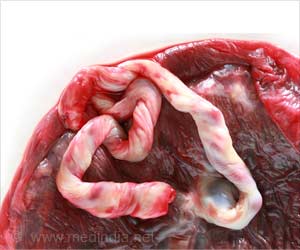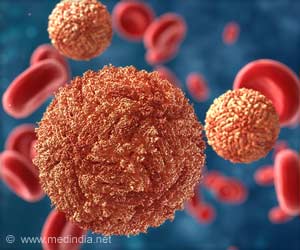Scientists have developed a computer model that predicts cancer recurrence in an individual based on how tumour changes size in response to the first round of radiation therapy.
Scientists have developed a computer model that predicts cancer recurrence in an individual based on how tumour changes size in response to the first round of radiation therapy. This method will be useful for doctors because two persons with the same kind of cancer often have different chances of their tumours coming back years later despite receiving the same treatment.
Led by Jian Z. Wang, director of the Radiation Response Modeling Program at the James Cancer Hospital and Solove Research Institute of Ohio State University in Columbus, the research team behind the computer model made a presentation on it at the 51st Annual Meeting of the American Association of Physicists in Medicine (AAPM) in Anaheim, California, on Tuesday.Zhibin Huang, the leading author, has been selected as this meeting's winner of the Jack Fowler Junior Investigator's Competition.
At Ohio State University, Huang's team studied 80 women with cervical cancer who were diagnosed with tumours ranging from the size of a marble to the size of a grapefruit.
Each woman was treated with a course of radiation therapy-beams of energy that destroyed the cancerous cells in her pelvis.
After a few weeks of radiation treatment, the researchers measured the volume of each shrinking tumour using an MRI scanner.
Huang fitted a mathematical model to this data, and calculated two things important for understanding how the tumours were responding to the radiotherapy: the fraction of cancerous cells that survived each of the daily radiation treatments and the amount of time it took each woman's body to clear away and flush out those cells that were destroyed.
Advertisement
The numbers could be used to predict whether or not a woman's cervical cancer would come back years after her treatments.
Advertisement
They further said that women whose bodies took longer than 22 days to clear out dead cells after each treatment were almost twice as likely to see their tumours reappear down the road.
The findings suggest that not all cervical cancers are the same.
Wang said that to improve treatment, patients should be grouped based on whether their tumours are radioresistant or radiosensitive.
Nina A. Mayr, a professor of radiation oncology at the Ohio State University James Cancer Hospital and Solove Research Institute, says that other kinds of cancer could also benefit from this approach.
"Using similar techniques, ongoing projects from our group are tackling other cancer sites, such as lung and prostate cancer," Mayr said.
Source-ANI
RAS















